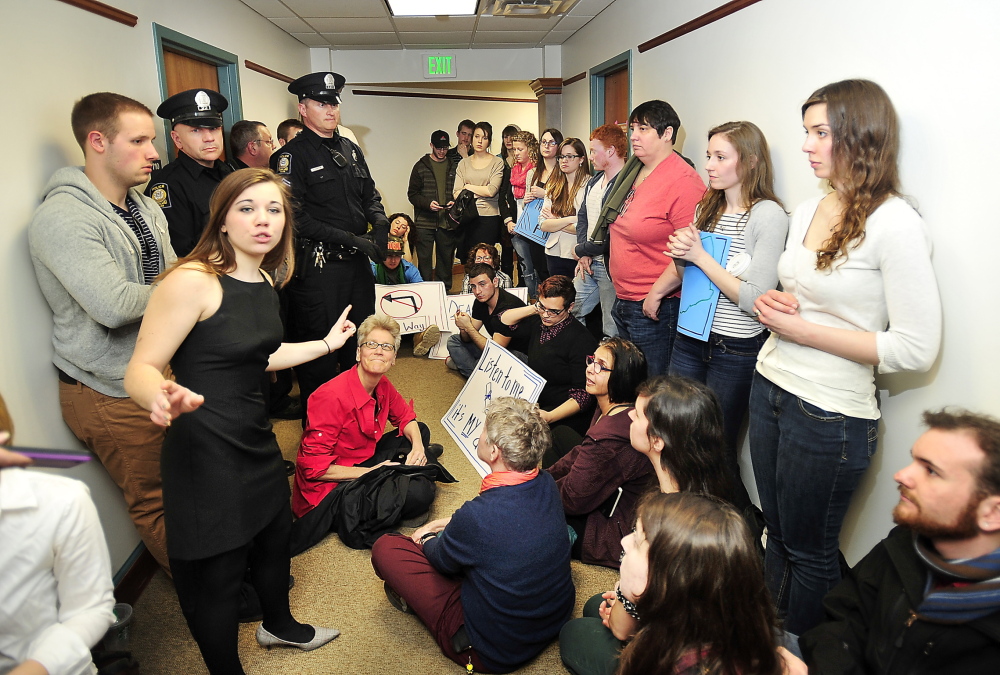University of Southern Maine President Theodora Kalikow was insistent Friday that her decision to reverse the layoffs of 12 professors was not a reaction to student protests.
But in interviews after her announcement, USM faculty members, a student protest leader and a nationally renowned author and researcher of activist movements said effective grassroots protests can hardly be separated from the policy that follows, or conversely, be the sole influencing factor in a shift.
They said the protesters’ actions, media attention they garnered, individual public statements by faculty, and the private negotiations by the Faculty Senate and labor union worked simultaneously together.
“I think without the student protests and without the general public responses that we’ve seen, it may not have happened,” said Jerry LaSala, chairman of the USM Faculty Senate. “I doubt whether the negotiations and the union actions would have been nearly as effective without the students.”
Meaghan LaSala, a junior who has been involved in the student protests and the niece of Jerry LaSala, said when the first inkling of cuts came in the fall of 2013, faculty and students began collaborating, and the cooperation intensified when the faculty layoffs were announced.
“Students were really outraged by the approach the administration was taking,” she said. “(The administration) say they want to engage in open dialogue and they tell us not to talk openly about what’s happening.”
The foment built over the following weeks, and involved deliberate work by the students to organize the opposition and get the message out. That the reaction was spurred by cuts to public education did not surprise Todd Gitlin, head of the doctoral communications program at Columbia University. Gitlin was a student protester at the University of California at Berkeley in the 1960s, and has since spent his career writing and researching protest movements throughout history.
“There’s a lot of people who are indignant about public service cutbacks of all kinds,” Gitlin said.
He said it’s impossible to predict when a protest will mushroom into a full-fledged movement.
But he said “it’s been true for 30 years or more … that there is a very low level of confidence of institutions to solve problems – corporate, government, you name it. So in a setting like that, there’s a certain dryness in the landscape, and sparks can ignite. That’s a feature of our time.”
Although Kalikow’s reversal is a success for the student protesters, the reinstatement of the faculty members has not changed the overall administration policy of cutting roughly $14 million from the university’s budget, the specifics of which still must be worked out.
“There will be a lot of work,” Jerry LaSala said. “It’s not going to be a joy ride, but it’s going to be a lot easier working together, rather than at cross purposes.”
Matt Byrne can be contacted at 791-6303 or at:
Twitter: MattByrnePPH
Send questions/comments to the editors.



